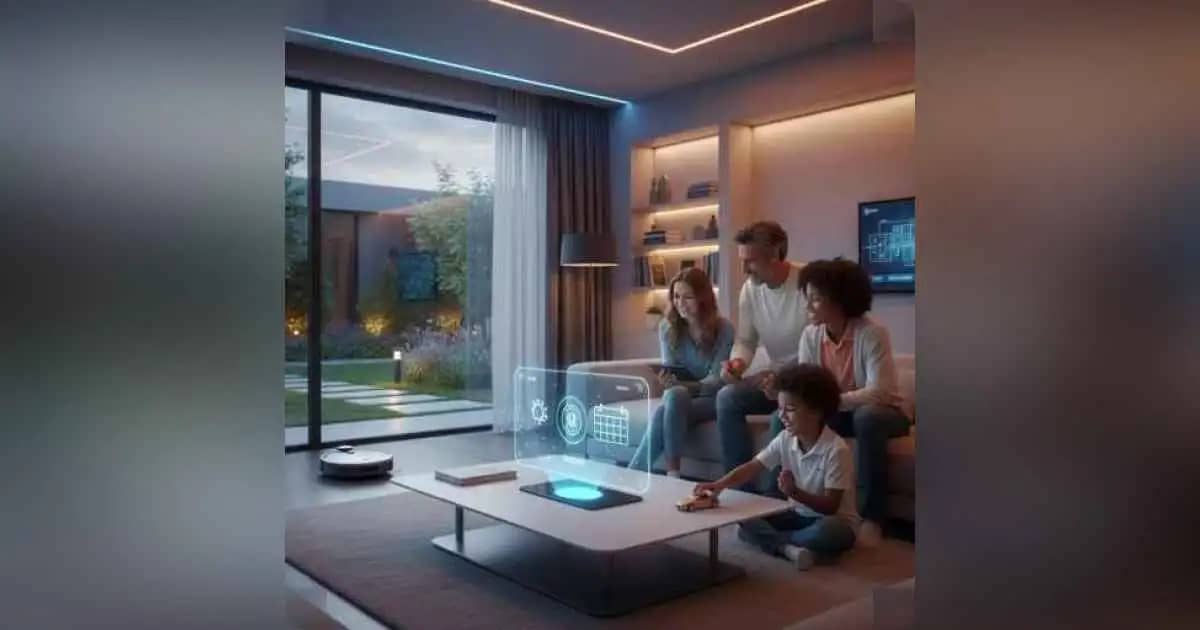
The Silent Revolution: How Smart Homes Are Redefining Modern Living
Beyond Convenience: Unpacking the Empathetic Technology Making Your Home Smarter, Safer, and More Sustainable
In an era defined by rapid technological advancement, our homes are no longer just passive shelters but evolving ecosystems designed to cater to our every need. The concept of the "smart home" has transcended futuristic fantasy to become a tangible reality, seamlessly weaving technology into the fabric of our daily lives. This isn't just about turning lights on with your voice; it's about a silent revolution, where empathetic technology is redefining comfort, safety, and sustainability in our most personal spaces.
The Dawn of Intuitive Living: What Exactly is a Smart Home?
At its core, a smart home is a residence equipped with devices that can be controlled remotely or automatically. These devices, from smart thermostats to intelligent lighting systems and interconnected security cameras, communicate with each other and with you, often via a central hub or your smartphone. It's about creating an environment that anticipates your needs, reacts to your presence, and learns from your habits. Imagine your coffee brewing as your alarm rings, or your heating system adjusting based on the weather forecast – this is the essence of intuitive living.
The power of smart homes lies in their ability to integrate various aspects of digital life. Beyond individual gadgets, it's the symphony of these devices working in harmony that unlocks true potential. For a deeper dive into how this integration shapes our future, you might be interested in exploring more about Smart Tech, Smarter Life: The Digital Future Begins Now.
Enhancing Everyday Convenience: More Than Just a Gimmick
For many, the initial draw of smart home technology is convenience. And rightly so. The ability to manage your home environment from anywhere in the world offers unparalleled ease. Forgot to turn off the iron? Check. Want to pre-cool your house before you arrive home from work? Done. These small efficiencies accumulate, freeing up valuable mental space and time.
Voice assistants have become the conductors of this convenience, allowing natural language commands to control a multitude of devices. From playing music to adding items to your grocery list, these AI-powered interfaces make interacting with your home effortless and natural, truly integrating digital life into your personal space.
A New Frontier in Home Security and Safety
One of the most compelling aspects of smart home technology is its profound impact on security and safety. Traditional alarm systems are being augmented and, in many cases, surpassed by comprehensive smart security setups.
Key Safety Features Include:
- Smart Locks: Grant or revoke access remotely, receive notifications when doors open, and never worry about lost keys again.
- Surveillance Cameras: Monitor your property 24/7 with live feeds, motion detection alerts, and cloud storage for recordings.
- Smart Smoke/CO Detectors: Receive instant alerts on your phone, even when away from home, and potentially pinpoint the exact location of a hazard.
- Water Leak Sensors: Prevent costly damage by detecting leaks early and alerting you before a minor drip becomes a major flood.
This proactive approach to home protection offers peace of mind, allowing you to stay connected to your home's well-being, no matter where you are.
Driving Sustainability: Smart Homes for a Greener Tomorrow
The environmental impact of our daily lives is a growing concern, and smart homes offer powerful solutions for fostering a more sustainable lifestyle. Energy-efficient smart devices are not just a luxury; they are a key component in reducing our carbon footprint.
How Smart Homes Boost Sustainability:
- Optimized Heating and Cooling: Smart thermostats learn your preferences and adjust temperatures based on occupancy, weather, and your schedule, preventing energy waste.
- Intelligent Lighting: Smart bulbs use less electricity than traditional ones and can be programmed to dim or turn off when not needed, or even adjust to natural light levels.
- Smart Appliances: Refrigerators, washing machines, and dishwashers can be scheduled to run during off-peak hours, saving energy and money.
- Water Management: Smart irrigation systems use local weather data to water your garden only when necessary, conserving precious resources.
By integrating these technologies, our homes become active participants in the fight against climate change, proving that a more connected life can also be a more responsible one. The fusion of future tech and digital life, particularly with AI, is opening up even more avenues for sustainability, as discussed in The Future of Tech: Digital Life with AI.
The Road Ahead: Challenges and Opportunities
While the benefits are clear, the journey to a fully integrated smart home isn't without its challenges. Interoperability between different brands and ecosystems can be complex, and concerns around data privacy and cybersecurity are valid. However, the industry is rapidly evolving, with standards emerging to make integration smoother and security more robust.
The future promises even more sophisticated smart home capabilities, driven by advancements in artificial intelligence and machine learning. Homes will not only react but predict, offering truly personalized environments that adapt to our moods, health, and social interactions.
Conclusion: Your Home, Reimagined
The silent revolution of smart homes is fundamentally reshaping how we interact with our living spaces. From unprecedented convenience and enhanced safety to significant strides in sustainability, empathetic technology is making our homes smarter, more responsive, and more aligned with our values. As we continue to embrace this digital transformation, our homes will evolve from mere structures into intelligent partners, enriching every facet of modern living.
Setting Up Your First Smart Home System: A How-To Guide
The world of smart home technology can seem daunting, but getting started is easier than you think. Here's a simple guide to help you build your smart sanctuary.
Step 1: Choose Your Ecosystem
Text: The first crucial decision is selecting a central platform that will serve as the brain of your smart home. Popular choices include Amazon Alexa, Google Home, and Apple HomeKit. Consider which ecosystem best integrates with devices you already own, your preferred voice assistant, and the range of third-party devices it supports. This choice will largely dictate the compatibility of your future smart gadgets.
Step 2: Start with Essential Devices
Text: Don't try to automate everything at once. Begin with foundational smart devices that offer immediate and noticeable benefits. A smart speaker (for voice control), a few smart lights (for ambiance and energy saving), or a smart thermostat (for climate control) are excellent starting points. These devices provide a taste of smart living and help you understand your preferences before committing to a larger setup.
Step 3: Automate Basic Routines
Text: Once your initial devices are set up, explore the automation features. Most smart home platforms allow you to create "routines" or "scenes." Start with simple automations, such as having your lights turn on automatically at sunset, your thermostat adjusting when you leave for work (geo-fencing), or your smart coffee maker starting at a specific time each morning. These routines enhance convenience and efficiency without complex configurations.
Frequently Asked Questions About Smart Homes
Question: What is the primary benefit of a smart home?
Answer: The primary benefit of a smart home is enhanced convenience, security, and energy efficiency. It allows users to control various aspects of their home (lighting, temperature, security, entertainment) remotely or through automated schedules, tailoring the living environment to their exact preferences and lifestyle.
Question: Are smart home devices secure from cyber threats?
Answer: While no system is entirely foolproof, reputable smart home devices come with strong security features. Users should always practice good digital hygiene: use strong, unique passwords, enable two-factor authentication whenever available, keep device software and firmware updated, and use a secure Wi-Fi network to maximize protection against cyber threats.
Question: How can smart homes contribute to sustainability?
Answer: Smart homes contribute significantly to sustainability by optimizing resource consumption. Smart thermostats, for instance, can learn habits and adjust heating/cooling to reduce energy waste. Smart lighting turns off automatically in empty rooms. Smart appliances can be programmed to run during off-peak energy hours. These features collectively lead to reduced energy consumption, lower utility bills, and a smaller carbon footprint.
Related article: Sanchar Saathi App Not Opening / Login Failed Today? 60-Second Fix Before Your Number Gets Blocked




